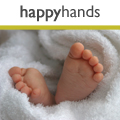Halloween and Bonfire Night First Aid Tips
Health
Halloween and Bonfire Night First Aid Tips
Halloween and Bonfire Night is a special time for little ones. However dark evenings and over-excited children can potentially be a recipe for disaster, and advanced preparation can help to ensure the evening is memorable for all the right reasons. Emma Hammett from First Aid for Life gives us her top tips.
Halloween
Fancy dress costumes are generally neither waterproof or flame resistant, so warm clothes underneath is a good idea, as well as a waterproof and ensure that your little ones stay away from naked flames. Hold hands with very little children, and be ready in case they panic and run if something suddenly scares them. Also be careful of Trick or Treat sweets, they may not be the freshest or most hygienic and will definitely not have been screened for anyone with a nut allergy!
It is avaisable that children should only approach houses where there is an obvious sign such as a pumpkin to show they are actively participating in the fun. For older children going out together, be sure that you know the route that they are taking; drum into them the importance of sticking together and also remind them about road safety as in their excitement they may dash across roads in the dark.

Fireworks
The safest way to enjoy Fireworks is to go to a public display. If you are planning fireworks at home again prepare in advance:
- Have an appropriately stocked first aid kit, a bucket of sand and plenty of water, as well as a fire blanket and a bottle of sterile saline to irrigate eyes should sparks be blown into them.
- Check the fireworks conform to British Standards and you have sufficient space to ignite them safely.
- Ensure you would know what to do in a medical emergency - please book onto a First Aid course or take an online course from www.onlinefirstaid.com.
Sparklers
Sparklers are fun, but they burn extremely fiercely and are not suitable for children under the age of five.
- Light sparklers one at a time and always wear gloves.
- Always supervise children with sparklers, to ensure they do not brush against other people or burn themselves.
- Have a bucket of sand to put used sparklers into and ensure no one picks them up until they are completely cool.
However careful you are, injuries can happen and here is how to treat some of the more common ones:
Minor burns
- Hold the affected area under cold, running water for at least 10 minutes.
- Cool the burn and keep the person warm - look out for signs of shock.
- If a child is burnt and the area is blistered and larger than a 50p piece, you should phone for an ambulance.
- Once the burn has been cooled for at least 15 /20 minutes, the burn can be covered with cling film or inserted into a sterile plastic bag if appropriate - alternatively keep running it under water until the paramedic arrives.
If clothing is on fire
- Remember : stop, drop, wrap and roll.
- Stop the casualty panicking or running - any movement or breeze will fan the flames.
- Drop the casualty to the ground and wrap them in a blanket, coat, or rug. Ensure they are made from inflammable fabrics such as wool
- Roll the casualty along the ground until the flames have been smothered.
Severe burns
If clothing has caught fire it is more than likely that the burn will be severe. A severe burn is deep and may not hurt as much as a minor one due to damaged nerve endings.
- Start cooling the burn immediately under cool running water, use a shower if the burns are large, but keep looking for signs of shock and be ready to treat it. Keep cooling the burn while waiting for professional help to arrive. Ensure you are cooling the burn and not the casualty, keep areas that are not burnt as warm and dry as possible to try and avoid the casualty going into shock.
- Instruct a helper to dial 999 or 112 for an ambulance.
- Whilst cooling, remove any constricting items such as jewellery or clothing from the affected area unless they are stuck to the burn. Wear sterile gloves if they are available.
Remember to NEVER
- Touch the burn.
- Use lotions, ointments or creams.
- Use adhesive dressings.
- Break blisters.
If you are unsure of what to do in a medical emergency please book onto a First Aid course or you can brush up on essentials with an online course from www.onlinefirstaid.com, emma@firstaidforlife.org.uk or call 020 8675 4036 for more information.
First Aid for life provides this information for guidance and it is not in any way a substitute for medical advice. First Aid for Life is not responsible or liable for any diagnosis made, or actions taken based on this information.
Related Articles
Nurseries: learning through fun
What is the Early Years Foundation Stage?
Koko Kids: a new design boutique
First Aid courses from an award winning London based company
First aid training that could help save a life
Greycoat Lumleys' Emergency nanny lifeline
A bright Montessori future in Brooke Green
Related Products
Baroo, cotbed duvet and pillow set
East Coast, Wooden Combination Highchair
Verbaudet, French maternity, baby and children's clothing
Baby Bjorn, Babysitter Balance
Have Your Say
Be the first person to comment on this article, just post a comment below.





In order to post a comment you need to be a member. Join Now | Sign in